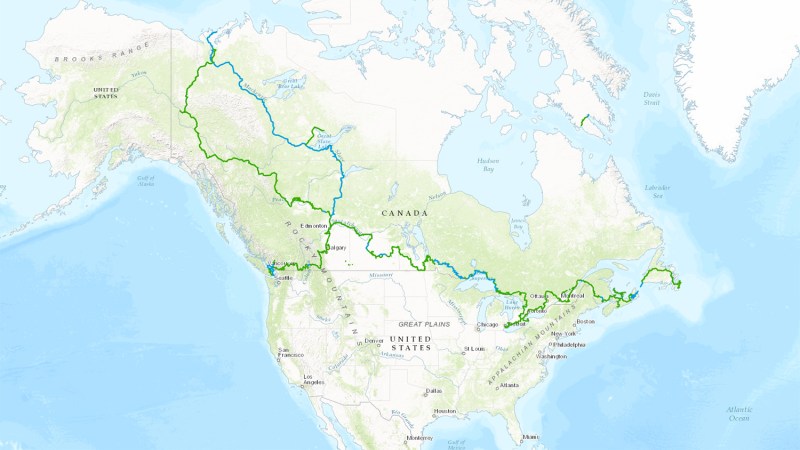Based on land mass alone, Canada is the second largest country in the world — but leave it to Canadians to devise an interconnected network of trails to explore the totality of that massive area on foot. Just in time to celebrate Canada’s sesquicentennial (the country’s 150th anniversary), The Great Trail has been completed and is now officially the longest continuous recreational trail system in the world.
On August 26, authorities announced that the last piece of The Great Trail was finally in place. It stretches from the Pacific Ocean to the Arctic Ocean to the Atlantic Ocean — a span of 24,000 kilometers (about 15,000 miles) across 13 provinces and territories. Outdoor lovers can now walk, hike, bike, ski, or ride a horse from coast to coast to coast. Officials point out that about one-quarter of the trail’s length follows waterways, so hikers will need to prepare for canoeing and kayaking at various spots along the trail. But, for outdoor lovers, that’s certainly not a bad thing.

The Great Trail was 25 years in the making and represents an astounding feat of engineering that dwarfs other long-distance trails (the Appalachian Trail comes to mind). To create this impressive network, existing trails were stitched together with newly cleared and developed land. Individual segments will be governed by hundreds of different authorities and government organizations, all working in concert.
Most noteworthy is how the trail affects the country on a cultural level. The Great Trail’s completion connects a staggering 15,000 Canadian communities. It’s the perfect way for resident lovers of the outdoors to easily venture farther from their hometown. In addition to touching the country’s most famous natural highlights, like the world record-setting tides of the Bay of Fundy and the stunning Gulf Islands in the west, it also affords travelers a more straightforward way to explore Canada’s more remote reaches. The trail, for example, touches dozens of First Nation Inuvik communities in the vast Arctic tundra.
The Great Trail is free for all to explore. Before setting out, we’d highly recommend making advanced preparations via this interactive map.



